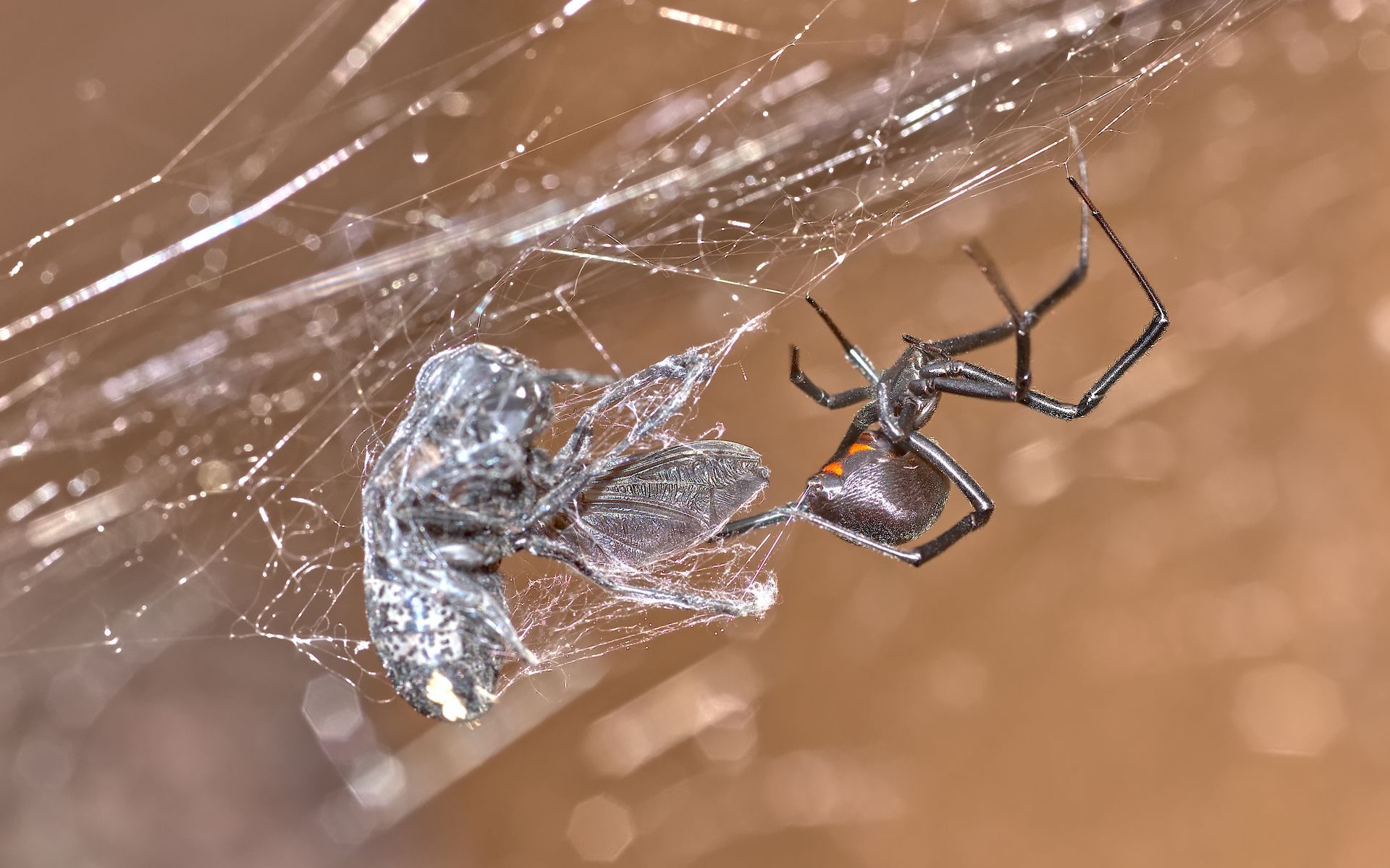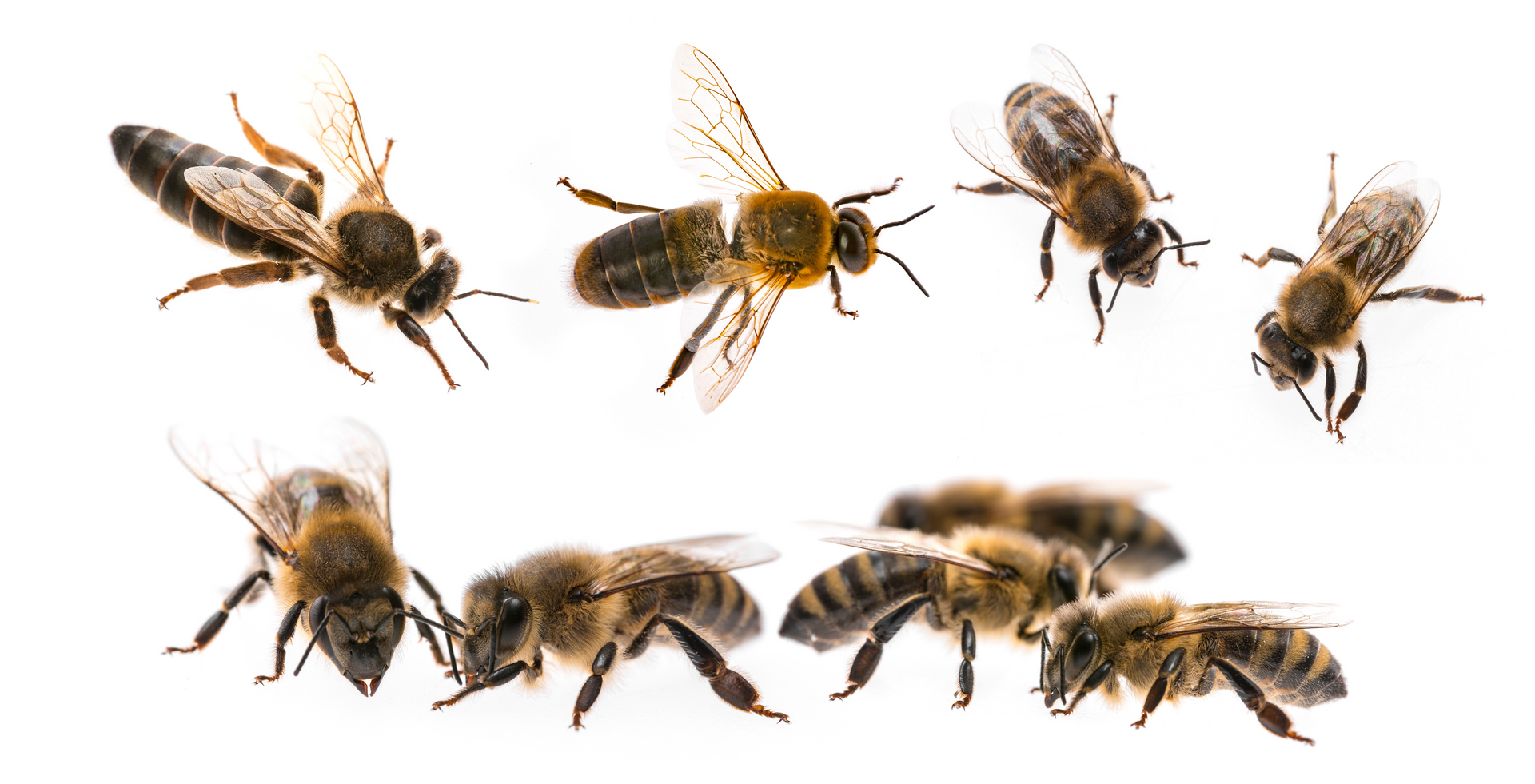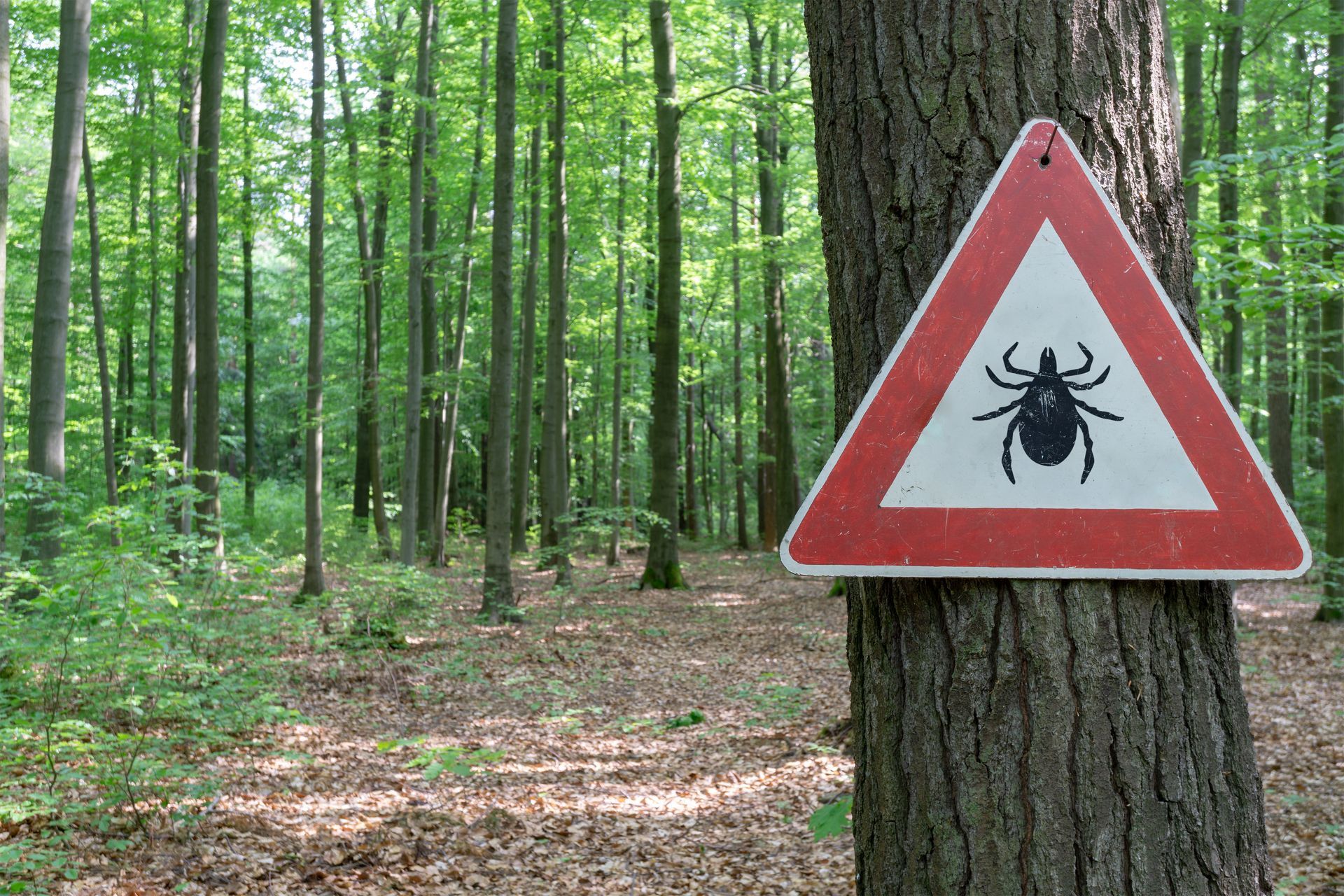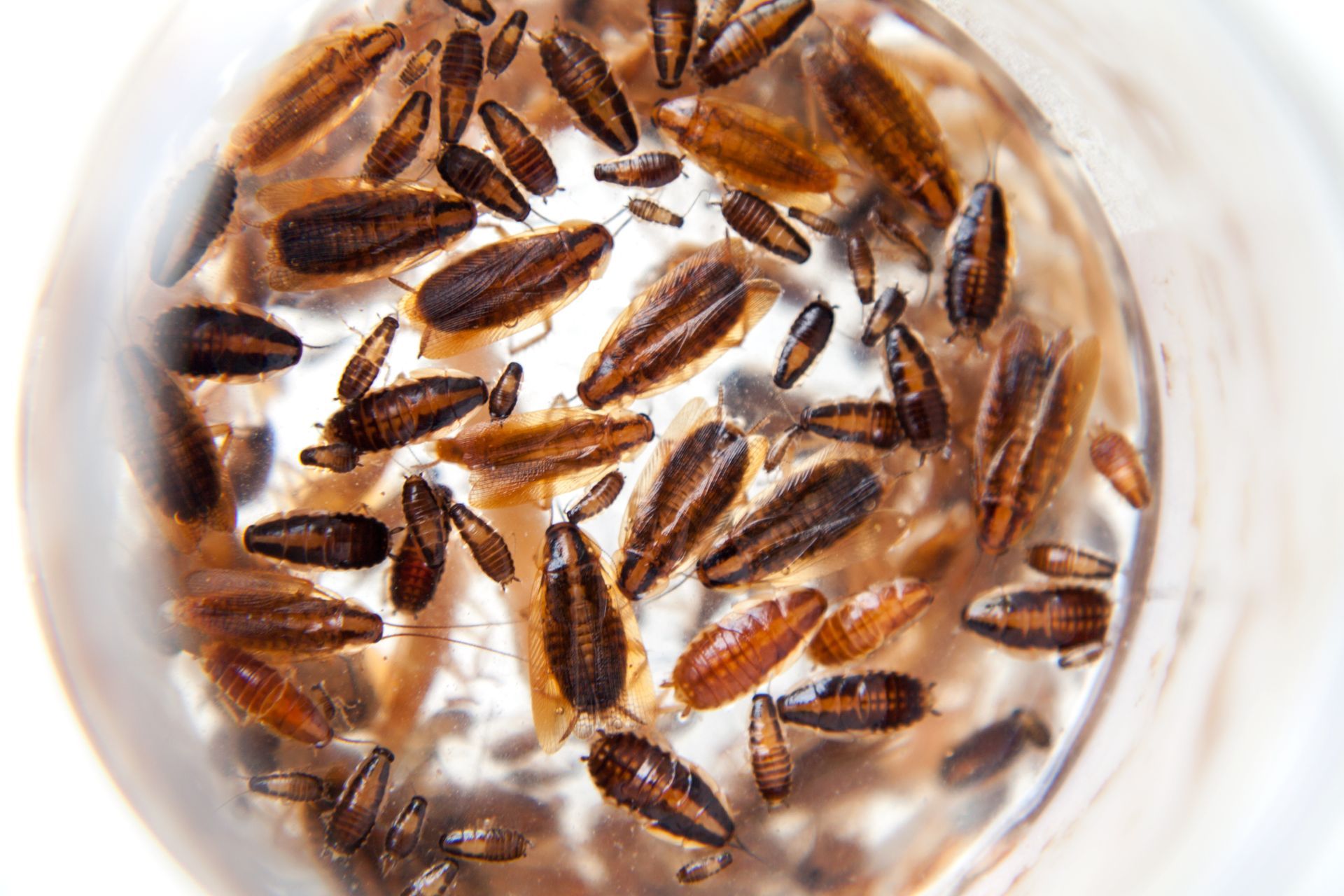What Do Black Widow Spiders Eat?

Black widow spiders are renowned for their distinctive appearance and potent venom, and they are skilled predators with a diverse diet. These arachnids have evolved to be opportunistic hunters that are capable of subduing a wide range of prey. Their menu primarily consists of various insects and arthropods, but they're not picky eaters and will adapt their diet based on availability. From tiny flies to creatures several times their size, black widows demonstrate remarkable versatility in their feeding habits because they are able to use their powerful venom and strong silk to capture and consume their meals.
What Are the Main Staples of the Black Widow Diet?
The black widow spider's diet is primarily composed of various bugs which showcase their adaptability as predators. Their menu includes a wide array of insects such as ants, caterpillars, grasshoppers, and beetles, as well as other arachnids, scorpions, and even small animals. This diverse palate allows black widows to thrive in different environments as they can adapt their hunting strategies to capture whatever prey is most abundant in their habitat.
Do Black Widows Eat Insects?
Black widow spiders are indeed voracious insectivores that rely heavily on various insects as their primary food source. These arachnids have developed a sophisticated hunting strategy that utilizes their intricate webs to capture a wide array of insect prey. The diet of black widows typically includes:
- Flies (house flies, fruit flies)
- Mosquitoes
- Grasshoppers and crickets
- Beetles
- Ants
- Moths and butterflies
- Caterpillars
- Cockroaches
- Bees and wasps
The black widow's preference for certain insects can vary based on their habitat and the local insect population. For instance, they may consume large quantities of ants due to their abundance and high protein content. Similarly, cockroaches are a favored meal when available. The spider's nocturnal hunting habits align well with the activity patterns of many insects which increases their chances of a successful catch.
Do Black Widows Eat Arthropods?
Black widow spiders are avid consumers of various arthropods which extend their diet beyond just insects to include a diverse range of joint legged invertebrates. This dietary flexibility allows them to thrive in different environments and adapt to prey availability. The arthropods that black widows commonly eat include:
- Scorpions
- Centipedes
- Millipedes
- Mites and ticks
Interestingly, black widows have developed specific hunting strategies for some of these prey. For instance, they often construct their webs near scorpion burrows which demonstrates a targeted approach to capturing these formidable bugs. This behavior showcases the black widow's role as a top predator in the arthropod world as they are capable of subduing and consuming creatures that many other species avoid.
Do Black Widows Eat Other Spiders?
Black widow spiders, while primarily insectivores, do occasionally engage in consuming other spiders under certain circumstances. This behavior occurs for several reasons:
- Territorial defense: Black widows may attack and eat other spiders that encroach upon their established web territory.
- Opportunistic feeding: Smaller spiders that accidentally become entangled in a black widow's web may end up as prey.
- Survival strategy: During periods of food scarcity, black widows may resort to consuming other spiders as an alternative food source to sustain themselves.
- Size advantage: Larger black widows may prey on smaller spider species that are easier to overpower and consume.
While this behavior demonstrates the black widow's adaptability as a predator, it's important to note that spider-on-spider predation is not their preferred feeding method and occurs less frequently than their consumption of insects and other arthropods.
Do Black Widows Eat Animals?
While black widow spiders are primarily known for their insectivorous diet, they occasionally demonstrate a capacity to prey on small animals when the opportunity presents itself. This behavior, though not typical, highlights why they are apex predators at the top of the insect food chain. The various animal prey that black widows might consume include:
- Frogs: In rare instances, black widows have been observed capturing and consuming diminutive frogs that accidentally become entangled in their webs. These encounters are infrequent but highlight the spider's ability to overpower larger prey when circumstances allow.
- Small Birds: Although uncommon, there have been reports of particularly small bird species falling victim to black widow webs. While not a regular occurrence, these incidents show the strength and effectiveness of the black widow spider's silk in trapping larger creatures.
- Lizards: Small lizards venturing into a black widow's territory may find themselves caught in the spider's web. These reptiles, while not a staple food source, can provide a substantial meal for the opportunistic arachnid.
- Snakes: In extraordinary cases, black widows have been known to trap and consume very small snakes that get trapped in their webs.
It's important to note that while black widows can prey on these small vertebrates, such occurrences are extremely rare incidents. The spider's primary hunting strategy revolves around their web construction, which is optimized for catching insects and other arthropods. When larger prey becomes entangled, the black widow employs its potent venom to paralyze the victim before it can wreak havoc on the web’s structure. Once the small animal’s movement slows down, the black widow can strengthen its grip on the prey by spinning additional web to secure the prey. This process allows the spider to consume prey that might otherwise be too large to handle through physical strength alone.
Do Female Black Widow Spiders Eat Their Mates?
The notion of female black widow spiders consuming their mates after copulation is a widely circulated myth that, while not entirely false, is far more nuanced than popular belief suggests. Contrary to their ominous reputation, sexual cannibalism among black widows is not a universal or inevitable occurrence. In fact, the prevalence of this behavior varies significantly among different species of black widows and across geographical regions. For instance, mate cannibalism is more common in Southern Hemisphere species, while in North American species like Latrodectus hesperus (the western black widow), it has never been observed in the wild. Even in Latrodectus mactans (the eastern black widow) where post-mating cannibalism does occur, it's not the norm and most males survive to mate again. Interestingly, a more common form of cannibalism within the black widow family occurs among newly hatched spiderlings, who may consume their siblings upon emerging from their eggs.
How Do Black Widows Eat Their Prey?
The feeding process of black widow spiders is a remarkable display of predatory efficiency and biological ingenuity. When a prey item becomes ensnared in their intricate, three-dimensional web, the spider's hunting sequence is set in motion. Alerted by the vibrations of the struggling victim, the black widow descends swiftly before using her front legs as sensory probes to locate the prey precisely. Once contact is made, she employs a strategic combination of silk wrapping and venom injection. The spider first immobilizes the prey by rapidly encasing it in silk, using comb-like structures on her hind legs to manipulate the threads with astonishing dexterity. This initial restraint is followed by a series of carefully timed bites that deliver a potent cocktail of venom and digestive enzymes. These biochemical agents serve dual purposes as they paralyze the prey and initiate the breakdown of its internal tissues. After a brief retreat to allow the enzymes to take effect, the black widow returns to feed. At this time the black widow will extract the liquefied contents of her prey through her fangs, leaving behind only an empty husk.
Do Black Widows Eat Their Webs?
Black widow spiders engage in a fascinating process of web recycling that involves consuming portions of their own silken structures. This behavior is crucial for maintaining the effectiveness of their silk spinning ability. As their webs accumulate dust, debris, and lose their adhesive properties over time, black widows systematically dismantle and ingest sections of their web. This act of consumption is not merely about tidying up their living space. It acts as a sophisticated method of nutrient reclamation. The silk is rich in proteins and other valuable compounds, so it is reabsorbed into the spider's body which allows for the conservation and reuse of these vital resources. Following this recycling phase, the spider then reconstructs its web into a fresh, pristine structure optimized for prey capture. This cyclical process of deconstruction, consumption, and reconstruction exemplifies the black widow's adaptive strategies that enables these arachnids to maintain peak hunting efficiency while minimizing energy expenditure in silk production.
How Long Can a Black Widow Spider Survive Without Food?
Black widow spiders demonstrate remarkable resilience when it comes to surviving periods of food scarcity. These arachnids possess the ability to endure extended fasts, with some individuals capable of persisting for several months without a meal. In extreme cases, certain black widows have been documented to survive for nearly a year in the absence of prey, showcasing their impressive metabolic adaptability.
Contact EcoGuard Pest Management if You Are Dealing with Black Widows
If you've encountered black widow spiders on your property, it's crucial to address the situation promptly and safely. While these arachnids play a role in controlling insect populations, their presence near human dwellings can pose risks. EcoGuard Pest Management specializes in effectively managing black widow infestations using environmentally conscious methods. Our team of experts can assess your unique situation, implement targeted control strategies, and provide guidance on prevention techniques to keep your home and family protected. Don't take unnecessary risks with these venomous spiders. Reach out to EcoGuard Pest Management today for professional, reliable spider control services tailored to your needs.
Black Widow Diet FAQs
Are black widows good to keep around?
While black widow spiders play a beneficial role in controlling insect populations, their presence around human habitations can pose significant health risks due to their potent venom. The potential danger to humans, especially children and the elderly, generally outweighs any pest control benefits they might offer. It's advisable to manage black widow populations near homes and frequently used outdoor areas to minimize the risk of accidental encounters and bites.
What are black widow spiders attracted to?
Black widow spiders are primarily attracted to dark, secluded areas that offer protection and ample hunting opportunities. They tend to gravitate towards cluttered spaces like woodpiles, garages, basements, and dense vegetation where they can construct their webs undisturbed. Additionally, these arachnids are drawn to areas with high insect activity, as this ensures a steady food supply for their survival and reproduction.
How poisonous is a black widow?
Black widow spiders are considered one of the most venomous arachnids in North America, with a potent neurotoxin that can cause severe pain and other systemic symptoms in humans. While their bites are rarely fatal to healthy adults, they can be particularly dangerous for children, the elderly, and individuals with compromised immune systems. Despite their fearsome reputation, black widows typically only bite humans as a defensive measure when threatened or accidentally pressed against the skin.

















